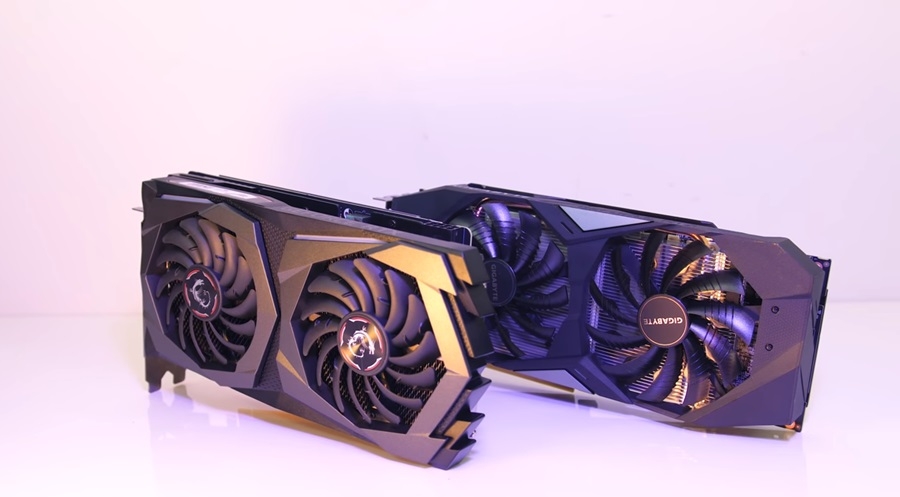The battle between Nvidia and AMD has continued to rage, and it appears that the latter is winning the skirmish. AMD has made huge waves this year after it released a new processor and GPU line up.
As a response, Nvidia launched the RTX Super cards in an attempt to stall AMD’s progress. AMD, however, slashed the price of the RX5700 just low enough to stay ahead of the competition.
This price dance has been one of the many maneuvers that occurred between AMD and Nvidia this year. And now, we see the result of who got ahead in the race.
Nvidia took 9.4 percent market share hit
In a report recently released by Jon Peddie Research, it appears that Nvidia was ultimately the loser between all the jostling having its market share this quarter pulled down from 77.3 percent to 67.9 percent. Meanwhile, AMD managed to increase its market share from 22.7 percent to 32.1 percent.
In short, AMD took 9.4 percent of Nvidia’s market share. AMD is expected to bring even more heat next year as it’s reportedly going to release what’s being billed as the “Nvidia Killer,” Digital Trends reported.
AMD and its Nvidia Killer
Little is known about the graphics card, but its code names are supposedly Navi 21 and Navi 23. What’s more, AMD is planning to outfit the Nvidia Killer with a bigger die, along with stream processors and new 7nm node. Unfortunately, there’s no mention of ray tracing technology just yet.
Ray tracing remains one of the edges that make Nvidia stay on this race. For instance, Nvidia’s GeForce RTX 2060 Super is still far more appealing than the AMD Radeon RX 5700 XT due to ray tracing. Of course, there are other factors, as well. The Deep Learning Super Sampling (DLSS) feature is arguably far better than ray tracing as it basically future-proof your investment, Forbes reported.
While not a lot of gaming titles support DLSS, it’s expected that more and more will take advantage of this technology moving forward. Nvidia’s RTX 2060 Super also consumes less power and is quieter compared to the Radeon RX 5700 XT. The only edge that the RX 5700 XT has against its competition is raw power.
If AMD implements ray tracing and DLSS on its Nvidia Killer, then there’s a big chance that the disparity between both companies in terms of market share will shrink further. Of course, it should also be noted that Nvidia is planning its own lineup for 2020 although nothing has been revealed about the upcoming cards thus far.



 Mainland China Investors Blocked from Accessing New Hong Kong Bitcoin ETFs
Mainland China Investors Blocked from Accessing New Hong Kong Bitcoin ETFs  Hertz to Offload 30K EVs This Year, Deepens Cuts Amid Mounting Fleet Losses
Hertz to Offload 30K EVs This Year, Deepens Cuts Amid Mounting Fleet Losses  China Investigates Digital Yuan Architect Yao Qian Amid CBDC Concerns
China Investigates Digital Yuan Architect Yao Qian Amid CBDC Concerns  Japanese Yen Hits Record Low As Bitcoin Surges Globally
Japanese Yen Hits Record Low As Bitcoin Surges Globally  Shein Joins Facebook, Amazon in EU Digital Regulations Compliance
Shein Joins Facebook, Amazon in EU Digital Regulations Compliance  Metaplanet Inc. Buys $6.25M in Bitcoin, Pivots to Digital Assets
Metaplanet Inc. Buys $6.25M in Bitcoin, Pivots to Digital Assets  Samourai Wallet Founders Arrested, Crypto Markets Tumble Amid Regulatory Heat
Samourai Wallet Founders Arrested, Crypto Markets Tumble Amid Regulatory Heat  Shiba Inu Announces Shibarium Hardfork: New Capabilities Teased, SHIB Price Jumps 3.2%
Shiba Inu Announces Shibarium Hardfork: New Capabilities Teased, SHIB Price Jumps 3.2%  DeepL Unleashes AI-Powered Tool for Business Writing
DeepL Unleashes AI-Powered Tool for Business Writing  SHIB Price Climbs as Shibarium Upgrade Sparks Optimism Among Investors
SHIB Price Climbs as Shibarium Upgrade Sparks Optimism Among Investors  Tesla Cybertruck Spotted in Sydney Sparks Debate: Potential Australian Release?
Tesla Cybertruck Spotted in Sydney Sparks Debate: Potential Australian Release?  Samsung Galaxy S24 FE Details Leak: Model Numbers, Name Uncovered
Samsung Galaxy S24 FE Details Leak: Model Numbers, Name Uncovered  What is ‘techno-optimism’?
What is ‘techno-optimism’?  Our laser technique can tell apart elephant and mammoth ivory – here’s how it may disrupt the ivory trade
Our laser technique can tell apart elephant and mammoth ivory – here’s how it may disrupt the ivory trade  Arthur Hayes Predicts Major Bullish Crypto Market Recovery Signal From US Treasury Department
Arthur Hayes Predicts Major Bullish Crypto Market Recovery Signal From US Treasury Department  US SEC Set to Reject Spot Ether ETFs in May Amid Regulatory Hurdles
US SEC Set to Reject Spot Ether ETFs in May Amid Regulatory Hurdles 






























